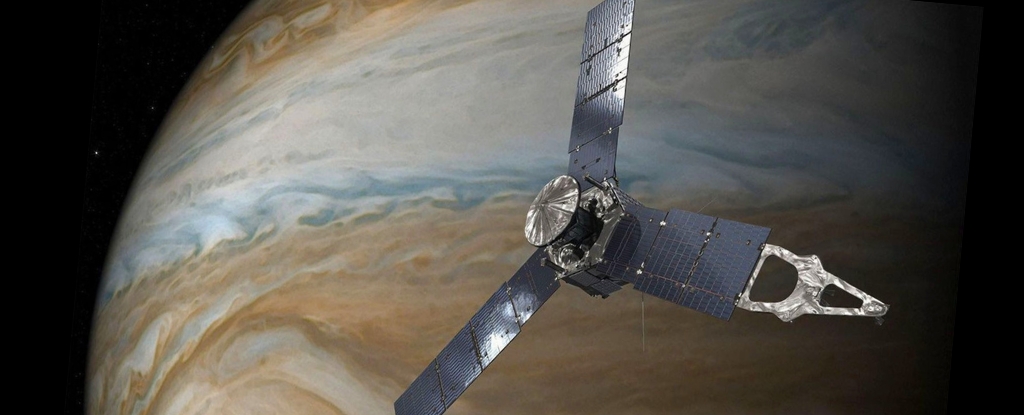Astronomers have identified a new interstellar object, designated 3I/ATLAS, which is set to pass near Jupiter in March 2026. Detected by the Asteroid Terrestrial-impact Last Alert System (ATLAS) in Chile on July 1, 2025, this comet follows the notable discoveries of ‘Oumuamua in 2017 and 2I/Borisov in 2019. The arrival of 3I/ATLAS has sparked significant interest in potential missions aimed at studying interstellar objects (ISOs) up close.
A recent study led by Prof. Abraham Loeb from Harvard University proposes utilizing NASA’s Juno probe to intercept 3I/ATLAS during its approach to Jupiter. According to the research, Juno could perform a maneuver to alter its orbit on March 16, 2026, allowing it to closely observe this enigmatic comet.
Potential for Discovery
The study highlights the scientific potential of examining 3I/ATLAS, which is believed to have a diameter of approximately 20 kilometers. The brightness of the comet suggests it could provide valuable insights into the conditions of its origin. As Prof. Loeb noted, the opportunity to study ISOs like 3I/ATLAS can reveal details about other star systems and the early solar system’s material.
Loeb’s team, which includes accomplished researchers Adam Hibberd and Adam Crowl from the Initiative for Interstellar Studies, emphasizes that intercepting 3I/ATLAS would be challenging. The comet’s trajectory brings it within 53.6 million kilometers of Jupiter, creating a unique window for Juno to adjust its course. The researchers utilized advanced software to calculate optimal flight paths for the probe, demonstrating that a close encounter is feasible.
Historical Context and Future Implications
The concept of studying ISOs has gained traction since the discovery of ‘Oumuamua, which raised questions about the nature of interstellar visitors. Prof. Loeb gained widespread attention for his hypothesis that ‘Oumuamua may have been an artificial spacecraft, a notion he explored in his book, Extraterrestrial. This latest research continues to delve into the possibility that 3I/ATLAS might not be a typical comet, but could harbor technological artifacts.
The findings from Juno’s instruments, including its near-infrared spectrometer and magnetometer, would provide a wealth of data about the comet’s composition and potential origins. “Our analysis is based on a remarkable but testable hypothesis that 3I/ATLAS could be an alien technology,” Loeb stated. This exploration could yield significant scientific insights, regardless of the object’s true nature.
While recent observations from the Hubble Space Telescope suggest that the nucleus of 3I/ATLAS may be smaller than previously thought, the upcoming encounter with Juno promises to clarify the comet’s characteristics. As it approaches the Sun, 3I/ATLAS is expected to release gases, further enhancing the potential for discovery.
In summary, the prospect of utilizing the Juno probe for a rendezvous with 3I/ATLAS presents an exciting opportunity for the scientific community. As researchers eagerly await this interstellar encounter, the mission could redefine our understanding of the universe and its many mysteries.





























































